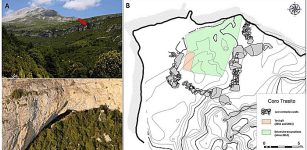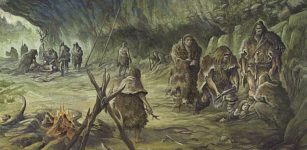Nakanishi Ruins: One Of Japan’s Largest Ruins Discovered In Nara
AncientPages.com - Archaeologists have unearthed remains of pit houses and ditches that indicated boundaries
at a site dating to the fourth century A.D. in Japan’s Nara Prefecture known as the Nakanishi ruins.
The excavations are conducted in the vicinity of other important remains known as Akitsu ruins, so this combines ancient site the combined site would be one of Japan's largest settlements in the fourth century.

“The site occupies a prominent area,” said Fumiaki Imao, a senior researcher at the institute, adding that the structures may have been used for rituals under the direct control of the early Yamato imperial court.
The site is adjacent to the famous Akitsu ruins, which yielded evidence of many large and unique structures dating from early fourth century during the Kofun Period.
Little is known of the workings of the court during this period, and the researchers hope their excavation
will help shed light on the period and hopefully will help to fill in missing blanks about the region's history.
Among the finds at the Nakanishi ruins are 26 dugout facilities that measure 3 meters by 3 meters to 6.5 meters by 6.5 meters, as well as ditches ranging in width from 30 centimeters to 1 meter that were created to mark out boundaries.
From 2009, researchers realized that many structures at the Akitsu ruins were similar to those at Ise Jingu shrine, along with remains of board fences that surrounded those facilities. The area of interest stretches 150 meters east to west and 100 meters north to south, making it likely the structures were used as religious facilities.
The Nakanishi ruins are located southwest of the Akitsu site and face almost the same direction, researchers said.
That suggests religious facilities and residential structures used to stand in an organized way within an area measuring more than 200 meters east-west and 400 meters north-south that straddle the two archaeological sites.
Hironobu Ishino, an archaeologist who is honorary director of the Hyogo Prefectural Museum of Archaeology, noted that the southwestern part of the Nara basin used to be ruled by the powerful Katsuragi family.
“The latest discoveries could represent the family’s exclusive ritual facilities,” he said.
AncientPages.com





















